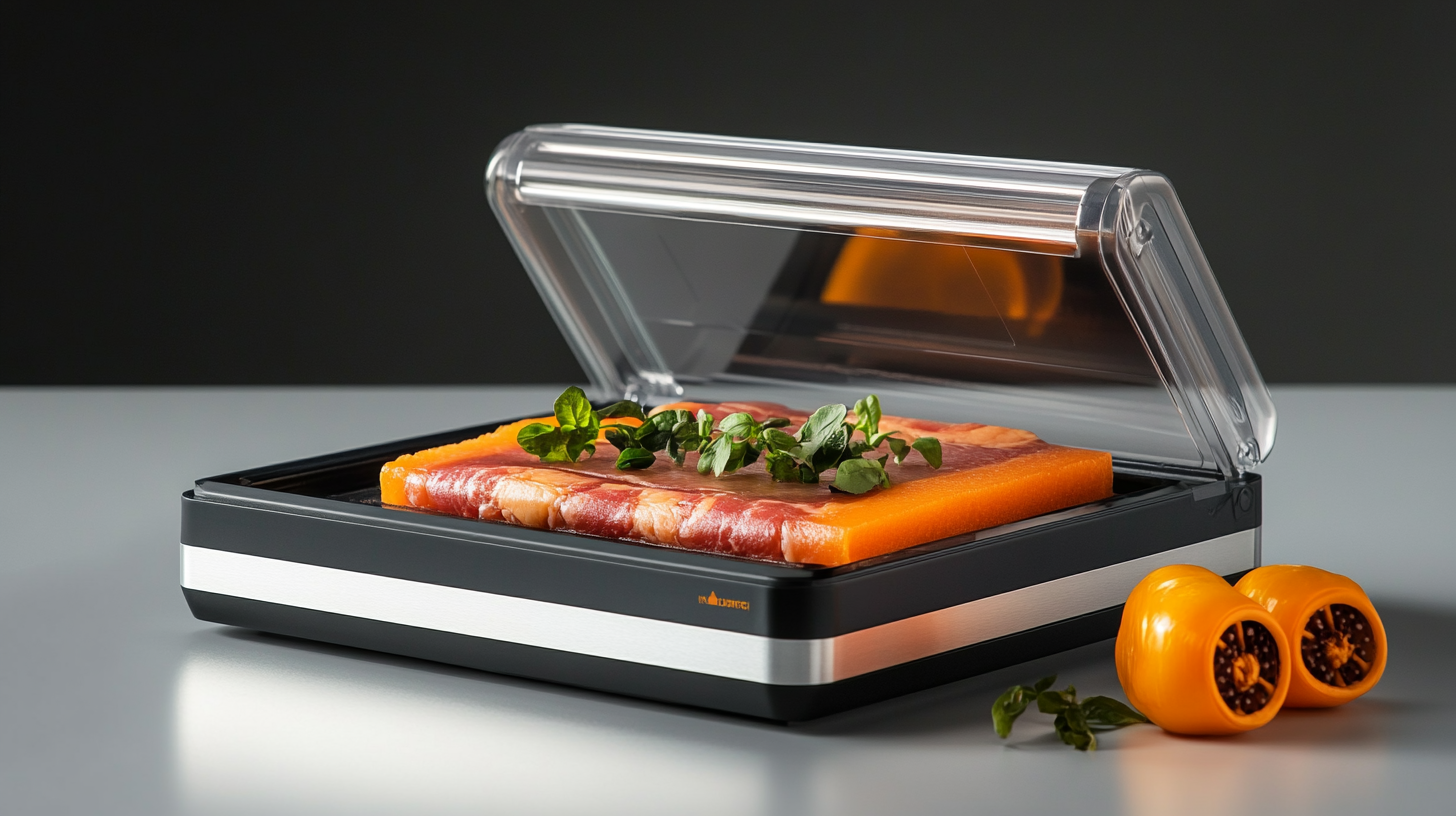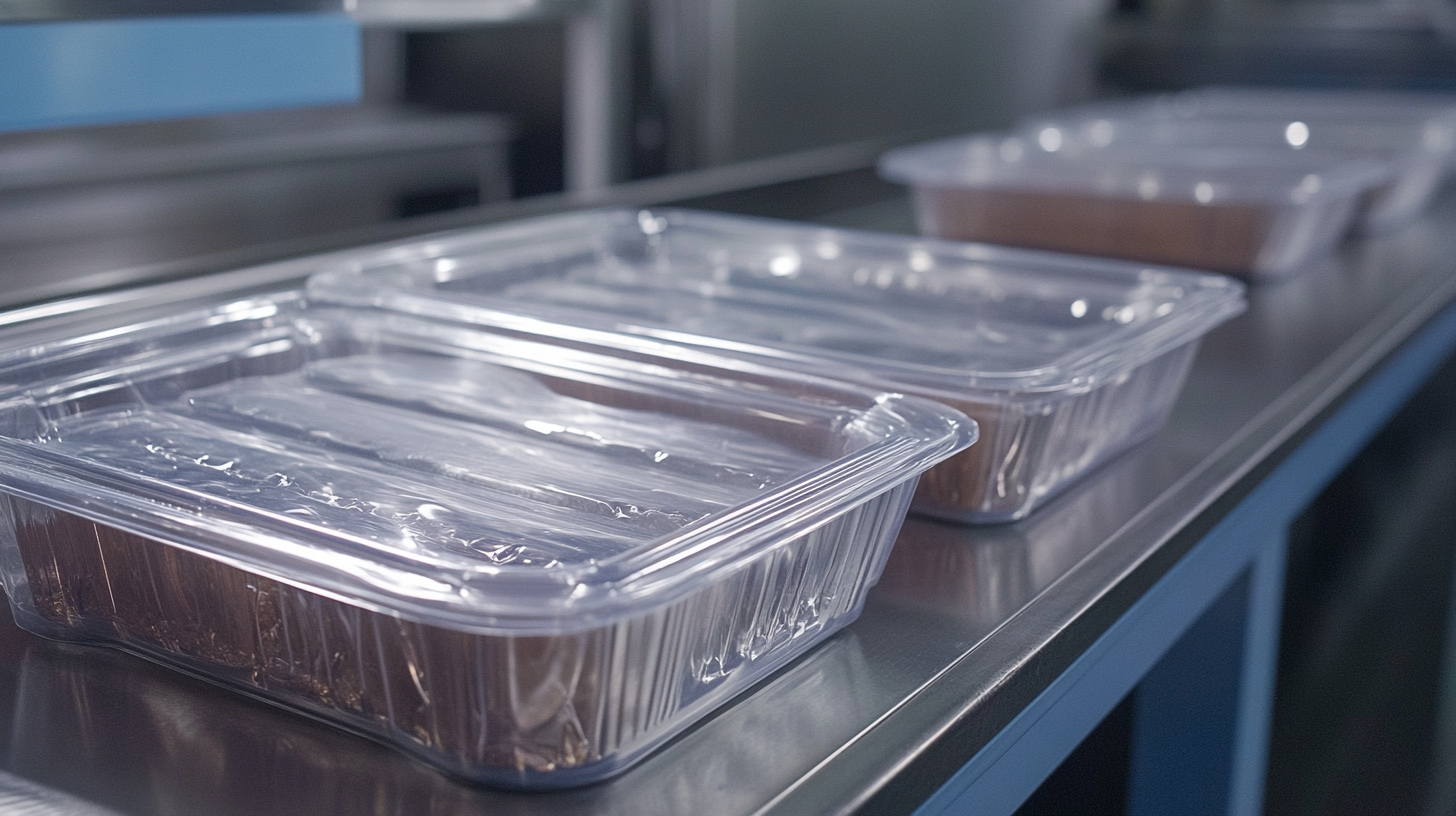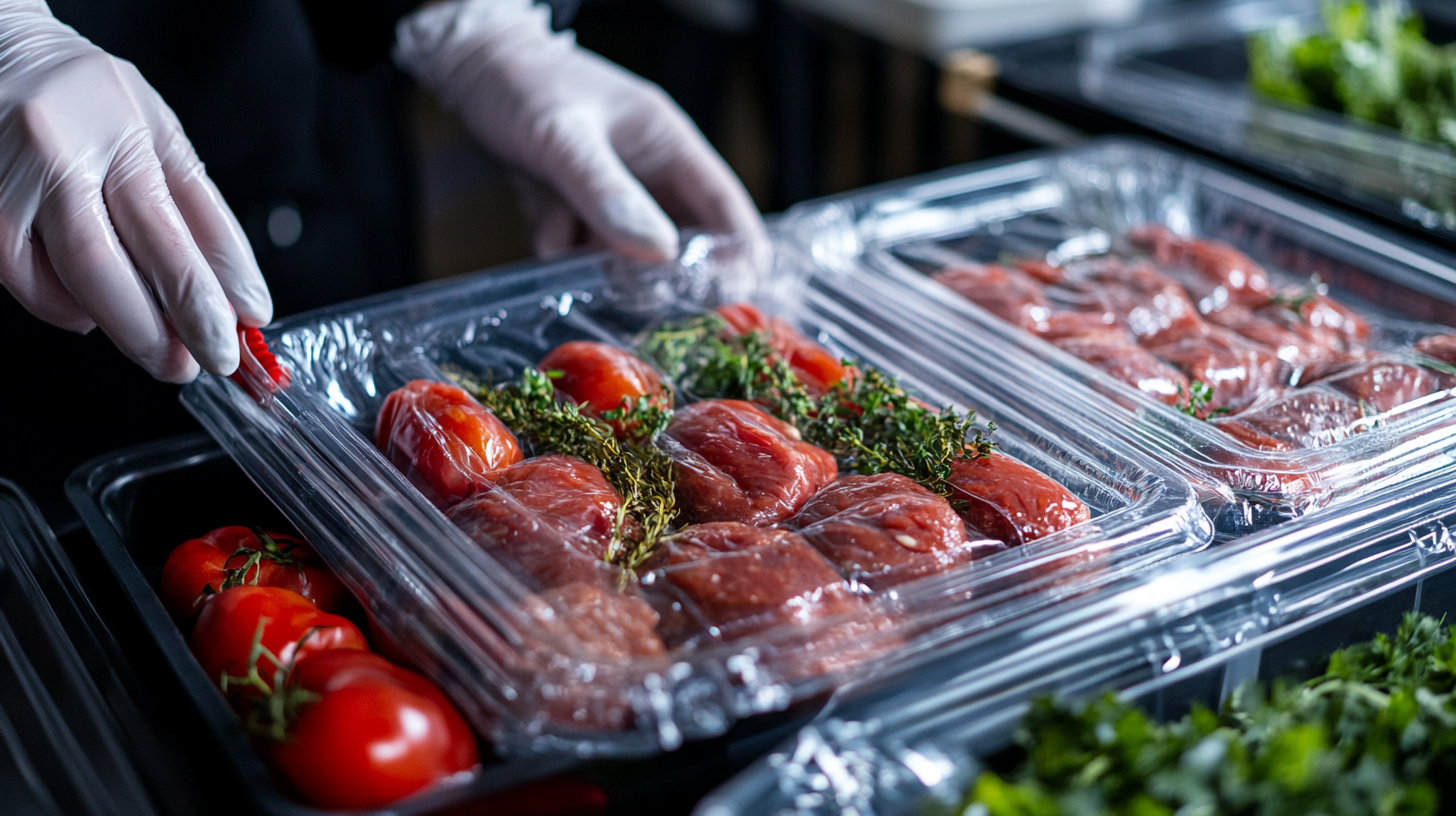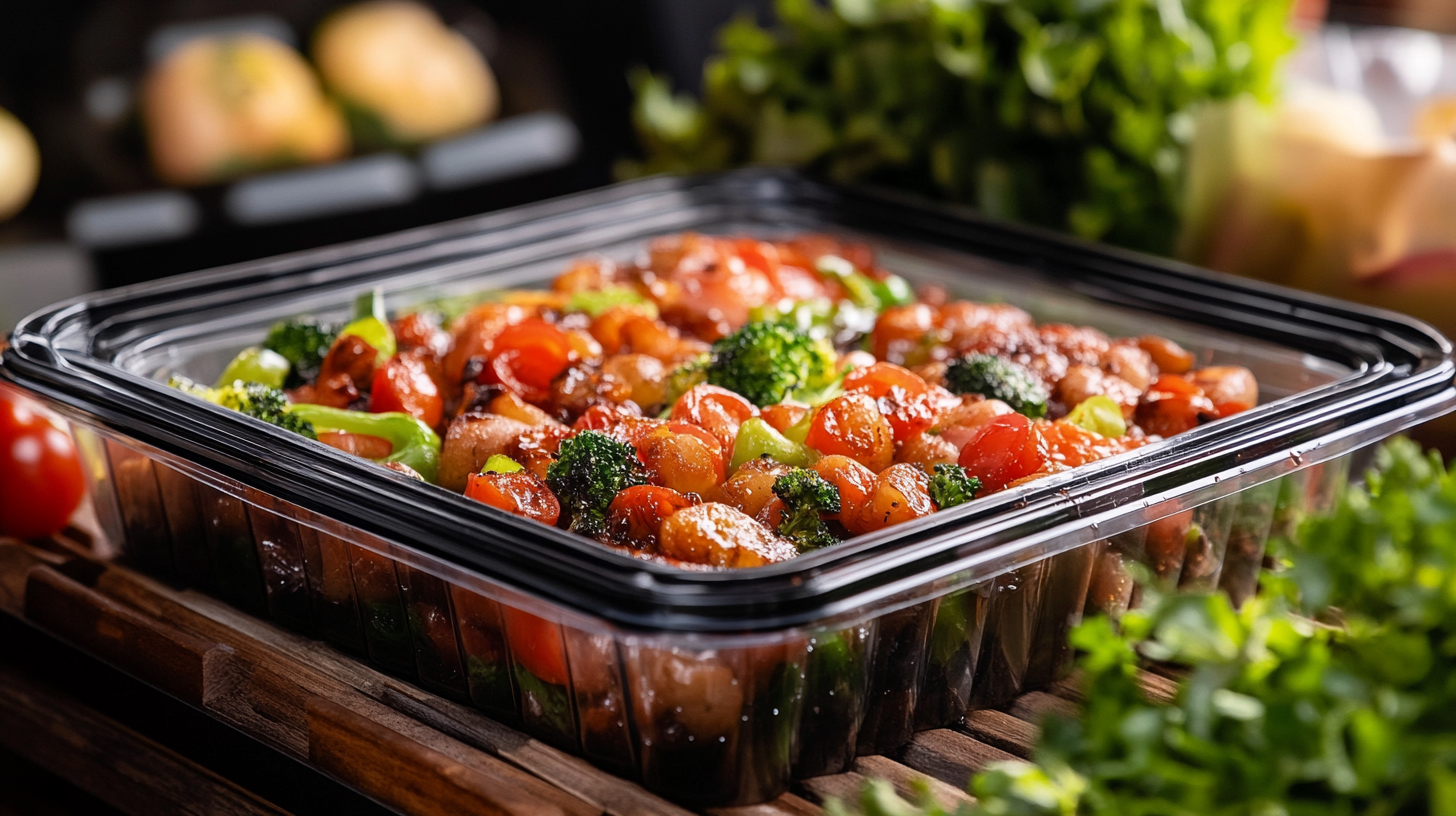Innovative Strategies for Choosing the Best Tray Sealing Machines in Global Markets
In an increasingly competitive global market, selecting the right equipment can significantly impact operational efficiency and product quality. One of the key pieces of machinery that plays a vital role in packaging is the Tray Sealing Machine. These machines not only enhance shelf life and ensure product safety but also contribute to reducing waste and optimizing resource use. As businesses strive to meet the rising consumer demand for convenience and sustainability, understanding the innovative strategies for choosing the best Tray Sealing Machine has never been more critical.
As technology continues to evolve, the variety of options available for Tray Sealing Machines also expands, presenting a challenge for manufacturers to identify the ideal solution for their specific needs. This blog will explore influential factors to consider when selecting a Tray Sealing Machine, including performance metrics, compatibility with various materials, and the importance of supplier reliability. By leveraging these innovative strategies, businesses can make informed decisions that align with their operational goals and drive success in today’s dynamic marketplace.

Identifying Key Features to Look for in Tray Sealing Machines
When considering the purchase of tray sealing machines for global markets, it is imperative to identify the key features that set these machines apart. The first critical aspect to examine is the machine's adaptability to different tray sizes and configurations. This flexibility is essential for manufacturers who deal with various product types and packaging styles. A machine that can seamlessly switch between different tray formats reduces downtime and increases operational efficiency, enabling businesses to meet diverse customer demands. Another vital feature to assess is the sealing technology employed by the machine. Advanced tray sealing machines utilize innovative sealing techniques that ensure minimal food waste and optimal preservation of product freshness. For example, machines that offer vacuum sealing capabilities can significantly extend the shelf life of perishable goods, which is a crucial consideration for food manufacturers. Additionally, the consistency of the seal quality must be evaluated, as improper sealing can lead to product contamination and customer dissatisfaction. Moreover, energy efficiency and sustainability are becoming increasingly important in the selection of tray sealing machines. Machines that minimize energy consumption while maintaining high-performance standards not only reduce operational costs but also align with global sustainability goals. Manufacturers should look for machines that offer advanced features such as energy-saving modes and eco-friendly materials, positioning their business as environmentally responsible in a competitive market. In conclusion, carefully identifying these key features is essential for making informed decisions when selecting the best tray sealing machines. By prioritizing adaptability, sealing technology, and sustainability, businesses can ensure they invest in equipment that meets both their operational needs and market demands.

Evaluating the Impact of Automation on Tray Sealing Efficiency
The advancements in automation significantly enhance tray sealing efficiency in global markets, a trend that reflects the broader impacts of technology on food packaging processes. Recent studies underscore the transformational role of automation in various sectors; for instance, a comparative analysis of automatic mosquito pupae sex sorters demonstrated substantial improvements in efficiency, underscoring the potential of automated systems to streamline labor-intensive tasks. Similarly, the integration of Automated Guided Vehicles (AGVs) in smart automated warehouse systems has exhibited a marked increase in productivity, which suggests that adopting automation technologies in the tray sealing industry could lead to enhanced operational performance.
Moreover, industry reports indicate a growing emphasis on the sustainability of packaging materials, notably PET trays, which raises important environmental considerations. Life Cycle Assessments (LCA) reveal that the sorting and recycling of PET trays can significantly reduce plastic waste in the environment. As manufacturers adopt automated tray sealing machines, ensuring that these systems are capable of efficient material sorting and handling will not only improve productivity but also align with sustainability goals. By leveraging machine learning algorithms for sorting purposes, companies can enhance their operational efficiency while contributing positively to environmental sustainability.
The integration of automation in tray sealing operations additionally mirrors advancements seen in healthcare sectors, where systems such as the Automated Medication Verification System (AMVS) have revolutionized workflows. These systems employ edge detection and CNN classifications, showcasing the potential of AI-driven solutions to eliminate manual errors and increase throughput. As the food packaging industry continues to evolve with these technologies, understanding the potential of automation will be crucial for identifying the best tray sealing machines that contribute to both efficiency and sustainability in an increasingly competitive global market.

Exploring Material Compatibility for Different Food Products
When selecting tray sealing machines for food packaging, one crucial factor is material compatibility with various food products. As consumer demand for diverse food items continues to rise, so too does the need for packaging solutions that can maintain product quality while ensuring safety. It is essential to understand the interactions between packaging materials and food contents, particularly in the context of novel applications like nanotechnology.
Recent advancements highlight the potential of nanotechnology in food packaging, offering enhanced barrier properties and antimicrobial functions. According to a study published by the National Institutes of Health, the integration of nanomaterials in packaging can effectively reduce oxygen permeability while extending shelf life. This is particularly beneficial for moist or perishable foods, such as fresh produce and dairy products, which require optimized packaging to prevent spoilage.
Furthermore, compatibility extends beyond mere material interaction; it also encompasses regulatory issues and consumer preferences. For instance, a report by Smithers Pira indicates that the global flexible packaging market is projected to reach $248 billion by 2024, driven by innovation and sustainability. As companies embrace these innovative tray sealing machines, they must also consider the materials being used and how they will interact with specific food types, aligning with both regulatory standards and environmental concerns.
By prioritizing material compatibility and leveraging cutting-edge technologies such as nanotechnology, manufacturers can create packaging solutions that not only enhance food preservation but also cater to the evolving demands of global markets. Adopting such strategies will be key to success in the competitive landscape of food packaging.

Why Cost Analysis Matters in Selecting Tray Sealing Equipment
When selecting tray sealing machines for your business, one of the most critical factors to consider is the cost analysis. This process goes beyond merely evaluating the purchase price; it encompasses a comprehensive assessment of the total cost of ownership over the machine's lifespan. Factors such as maintenance, energy consumption, and production efficiency can significantly impact your bottom line. An effective cost analysis allows businesses to make informed choices that align with their budget while ensuring they do not compromise on quality or performance.
In the global market, the price of tray sealing machines can vary greatly due to factors like manufacturing origin, technology employed, and local market conditions. Thus, comparing different machines requires an understanding of the long-term costs rather than just the initial investment. Cost analysis also involves evaluating the potential savings from improved production rates and reduced material waste that come with advanced sealing technology. By assessing these elements, businesses can uncover hidden costs that might otherwise be overlooked.
Moreover, a thorough cost analysis helps in identifying the right machine that meets both operational needs and financial constraints. It encourages a strategic approach to vendor negotiations by providing a clearer picture of what is truly valuable for the business. With global competition intensifying, making the right decision based on a detailed cost analysis can differentiate successful enterprises from those that struggle to maintain profitability.
Sustainability Practices in Tray Sealing Technology: A Global Perspective
The trend towards sustainability in tray sealing technology is gaining momentum, as manufacturers and consumers alike prioritize eco-friendly packaging solutions. One noteworthy example is Graphic Packaging International's PaperSeal® range, launched in 2020, which has set a benchmark for sustainable packaging. This innovative hybrid packaging solution uses paper-based materials that are not only recyclable but also demonstrate a reduced carbon footprint compared to traditional plastic trays. Such advancements reflect a broader industry commitment to minimizing environmental impact, aligning with global efforts to promote sustainable practices.
As the global food trays market is projected to reach approximately USD 10,399 million by 2025, manufacturers are increasingly focusing on sustainable technologies that cater to consumer demands. Key players are adopting practices such as utilizing hot melt adhesives that are designed to minimize waste and improve recycling efficiency. This strategic shift not only addresses regulatory pressures for more sustainable packaging but also positions brands favorably in the competitive market landscape. Ultimately, the integration of sustainability into tray sealing technology is not just a trend—it's becoming essential for growth and compliance within global markets.

